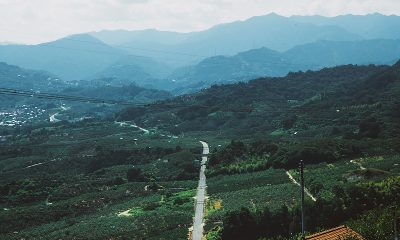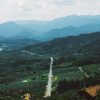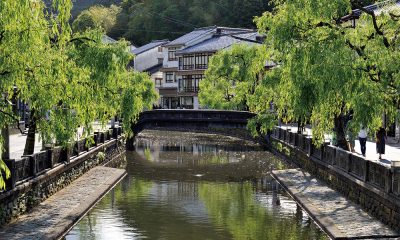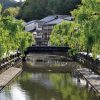Travel
Shimantogawa: Downstream Adventures
Paddle into the great outdoors and explore the twists and turns of Japan’s Shimanto River.
The Shimanto River, which flows through Kochi Prefecture on Shikoku Island, is the last clear stream of Japan. At an impressive 196 km in length, the river is free of man-made dams, and the various local towns and communities have forged strong relationships with all aspects of river life.
Shimantogawa boasts 47 chinkabashi, which are cleverly designed bridges that allow flood waters to breach the top of the bridge while leaving the structure mostly intact when the flood waters retreat. The bridge design features a road with streamlined pillars anchored into the river bed which holds the passageway a few meters from the river below, but it is free from side railings, so there is less drag in high waters.
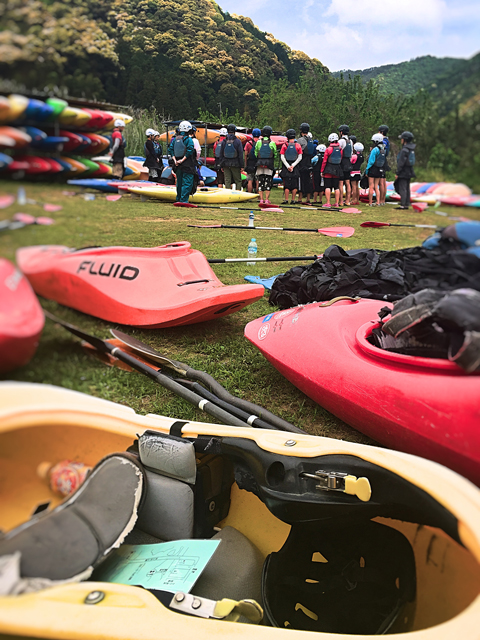
The best way to experience the Shimanto River is to glide along its surface. The rocky river provides a unique opportunity to kayak, canoe, or raft, with stretches of calm, naturally flowing water, accentuated with technical white-water drops. If you are new to paddle sports then the safest way to experience the river is to join one of the many tours on offer. These tour options provide you with all the equipment, instruction, and guidance you need, as well as photos of your journey. These packages are usually offered on a half-day or full-day basis. The one-day kayak experience provided by Canoe Kan, located in the small town of Ekawazaki, is priced at ¥8,100 and runs from 9:30 am to 4:00 pm. The half-day kayak experience is ¥5,400 and is offered from 9:30 am to 12:00 pm. The one-day tour starts with signing in, paying, and getting the paperwork out of the way in the large cabin-style outpost. Then participants head to the riverside to get their gear sorted and fitted before starting the paddling tutorial and then finally getting their boats into the water. The rest of the morning is spent practicing in calm waters close to Ekawazaki before breaking for lunch and coming back to start the afternoon tour, which travels 8 km to the most famous of the chinkabashi bridges and back.
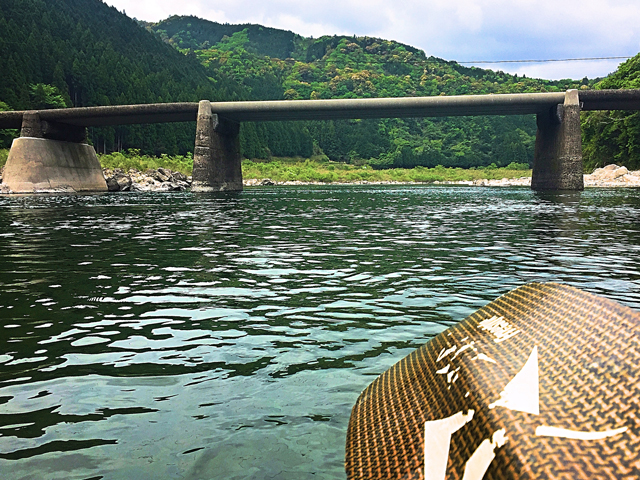
Of course, those with more experience and a sense of adventure can plan their own runs along the river. However, you must provide your own boat and gear, as tour companies will not rent any equipment to customers who do not join a tour. There are numerous campsites that line the river, both established and free range. Camping on a small inlet overlooking the arching river with a mid-sized mountain off in the distance boasted one of the most picturesque views of the area. There are many places to park your vehicle and launch your boat along the water. The flow of the river in early May seemed to be relatively calm. However, various sections of fast-dropping white water raised the thrill level considerably and offered technical challenges. Generally speaking, the river seemed fairly shallow and was often spread wide over a rocky river bed. The water was warm enough to engage in short swimming sessions, including a few exciting jumps from the chinkabashi. My personal route started from Utsuigawa, and my goal was to reach Ekawazaki, roughly 45 km downstream, but after paddling hard for around seven hours, I was only able to reach Tosa-Showa. To my delight, I was subjected to a great deal of rough water that broke up the otherwise peaceful paddling.
Some of the towns also offer small onsen. Relaxing in a hot bath after a day spent enjoying a pristine river is one of the simple luxuries of rural life in Japan. The steamy waters of Taisho Onsen in the hamlet of Tosa-Taisho definitely helped relieve the minor bumps and bruises of a day of river adventuring.
These same small towns that line the river are accessible by train, but keep in mind that trains come and go very infrequently – sometimes only a few times a day – so it is more efficient to travel by a rental car or your own transportation.
The roads running alongside the river connect the various small towns. These roads also feature markets with locally sourced produce and goods at various points along the way. The Shimanto River basin is famous for seared bonito fish and this local delicacy, called katsuo tataki, is commonly served with lemon, onion, and parsley. It is a delectable treat while visiting Kochi Prefecture.
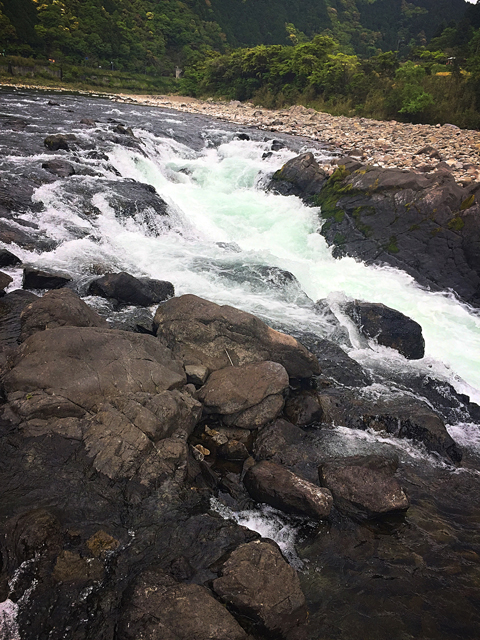
Shikoku Karst
One of Japan’s three largest karst landforms can be found in Shikoku Karst Natural Park where you can enjoy sprawling fields, pastoral scenery with grazing sheep and cattle, and landscapes dotted with camstone, or white limestone, and cone-shaped sinkholes. It straddles the towns of Niyodogawa, Tsuno and Yusuhara. The Tengu Plateau is known as an area where dairy cows are pastured and from June to July, beautiful flowers can be seen on the plateau. Heading up the narrow roads to the Shikoku Karst was a seemingly never-ending road of hairpin turns around rock faces, and tree-lined cliff sides that were secured with their metallic barriers.
After winding up the mountain to a trailhead, you can visit a well-developed lookout spot equipped with a restaurant, hotel, gift shop, campsites and log cabins. A cedar-chip-lined forest trail extends into the plateau from this viewing spot and gathering point. The first 1 km of trail is blanketed in golden-yellow wood chips which emit a rich, foresty aroma. The peak of the plateau is at 1,485 m of elevation, but that is misleading, as the climb from the viewpoint parking lot is probably only a few hundred meters of increased elevation, and the summit can be reached in about one hour from the parking area.









